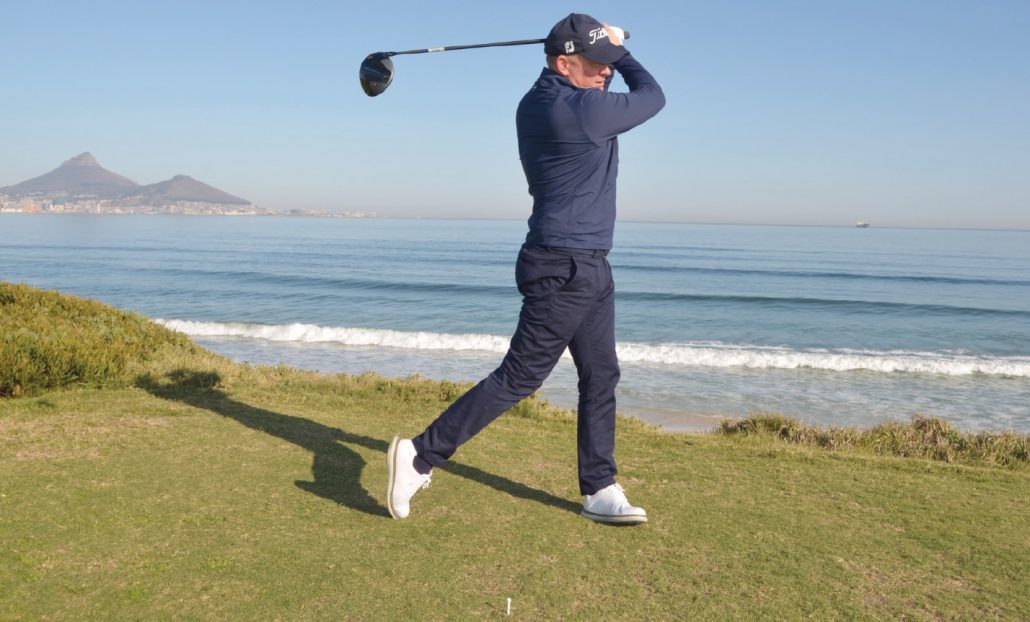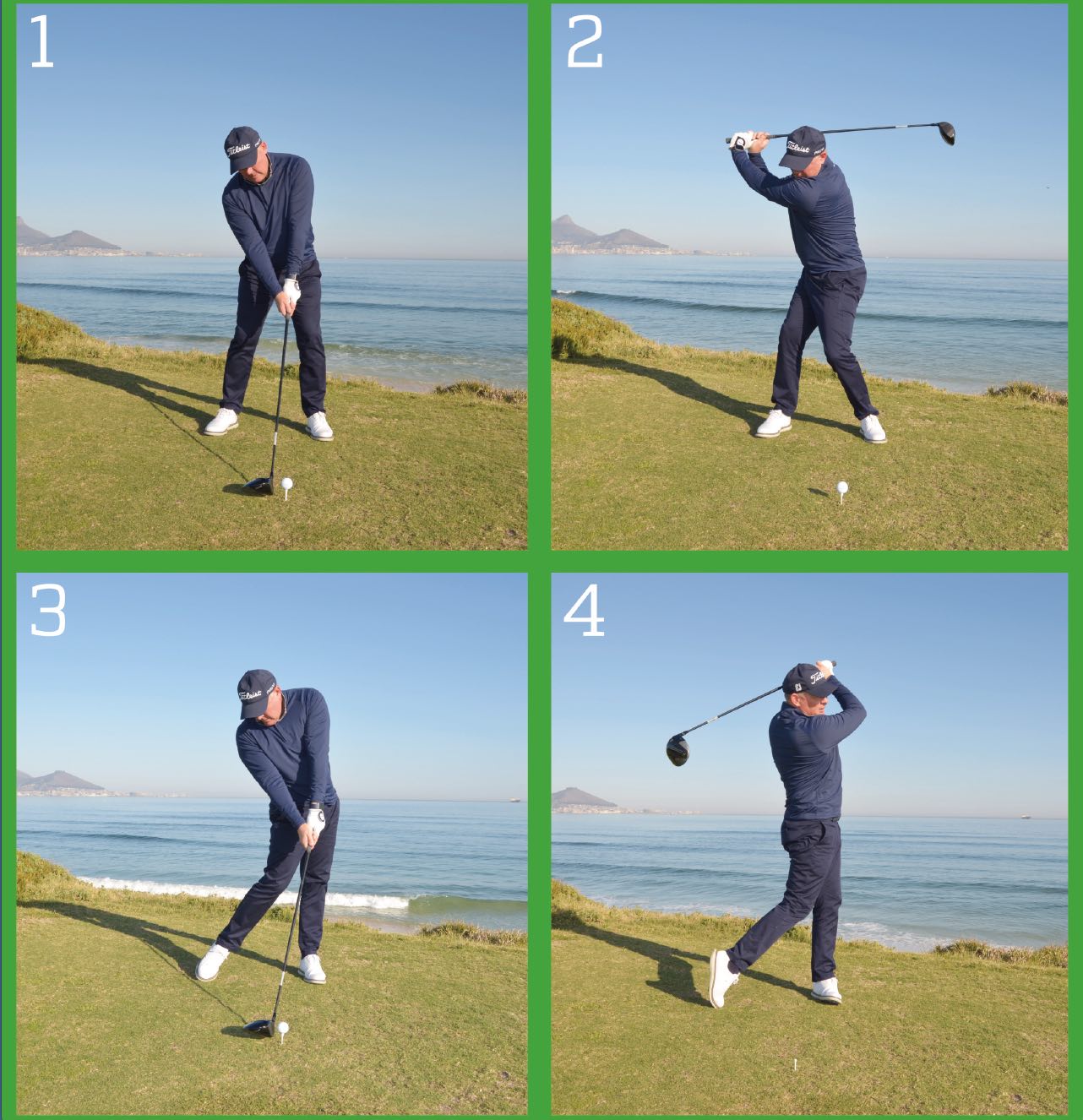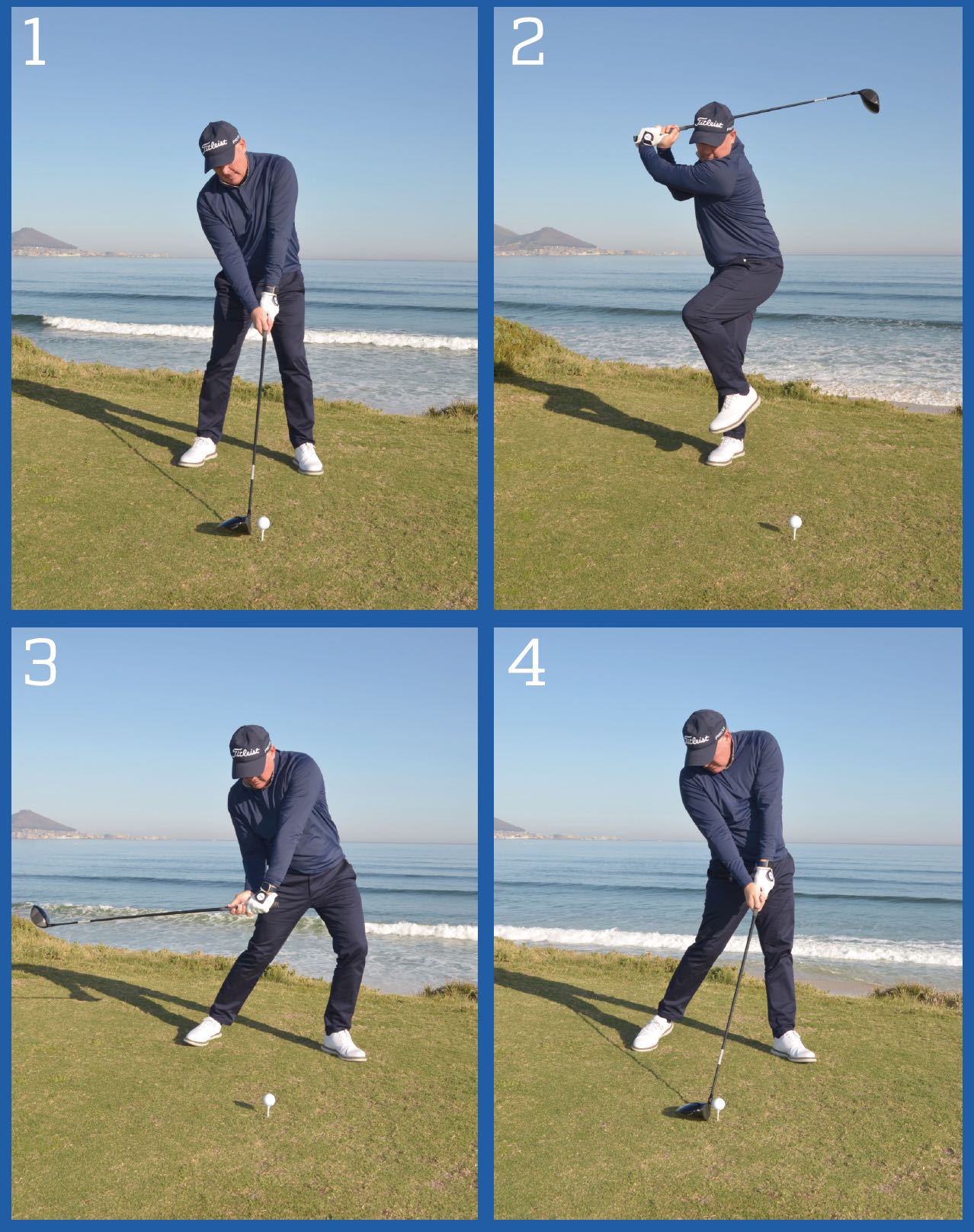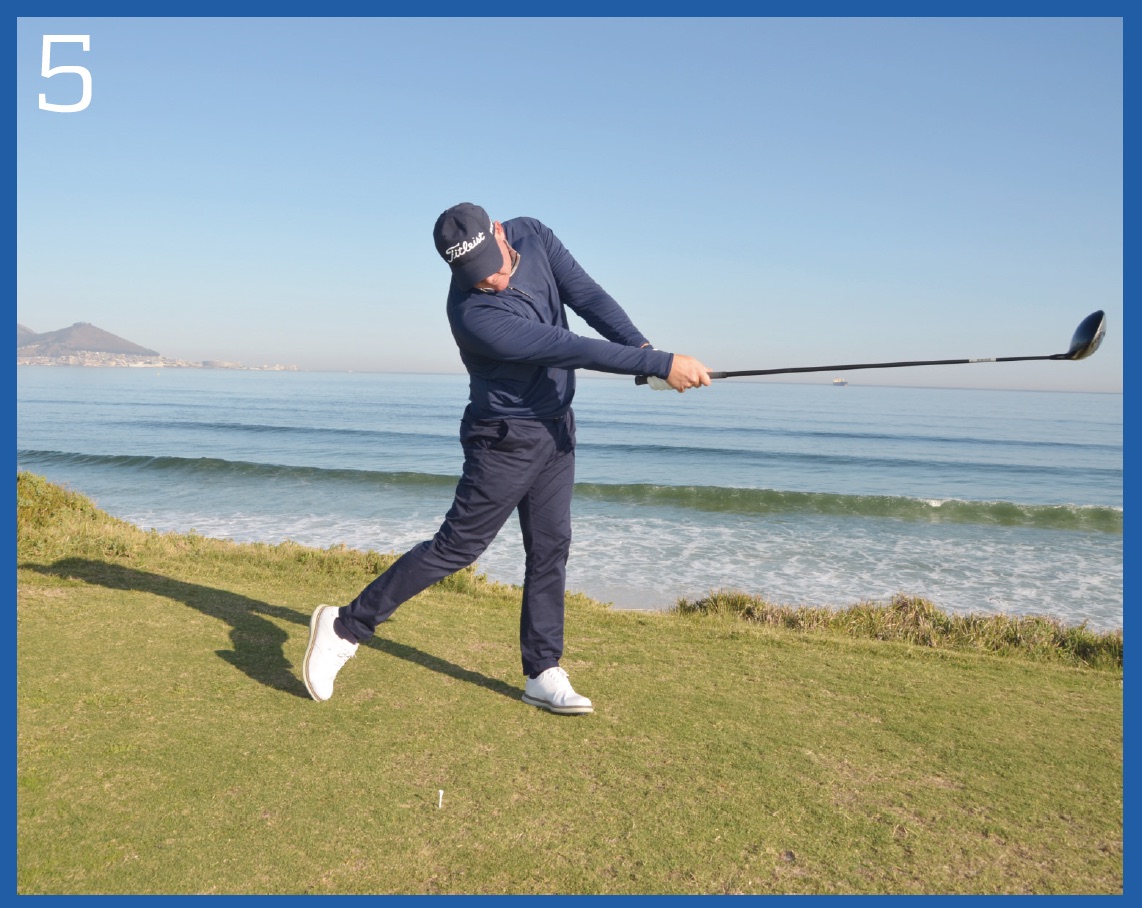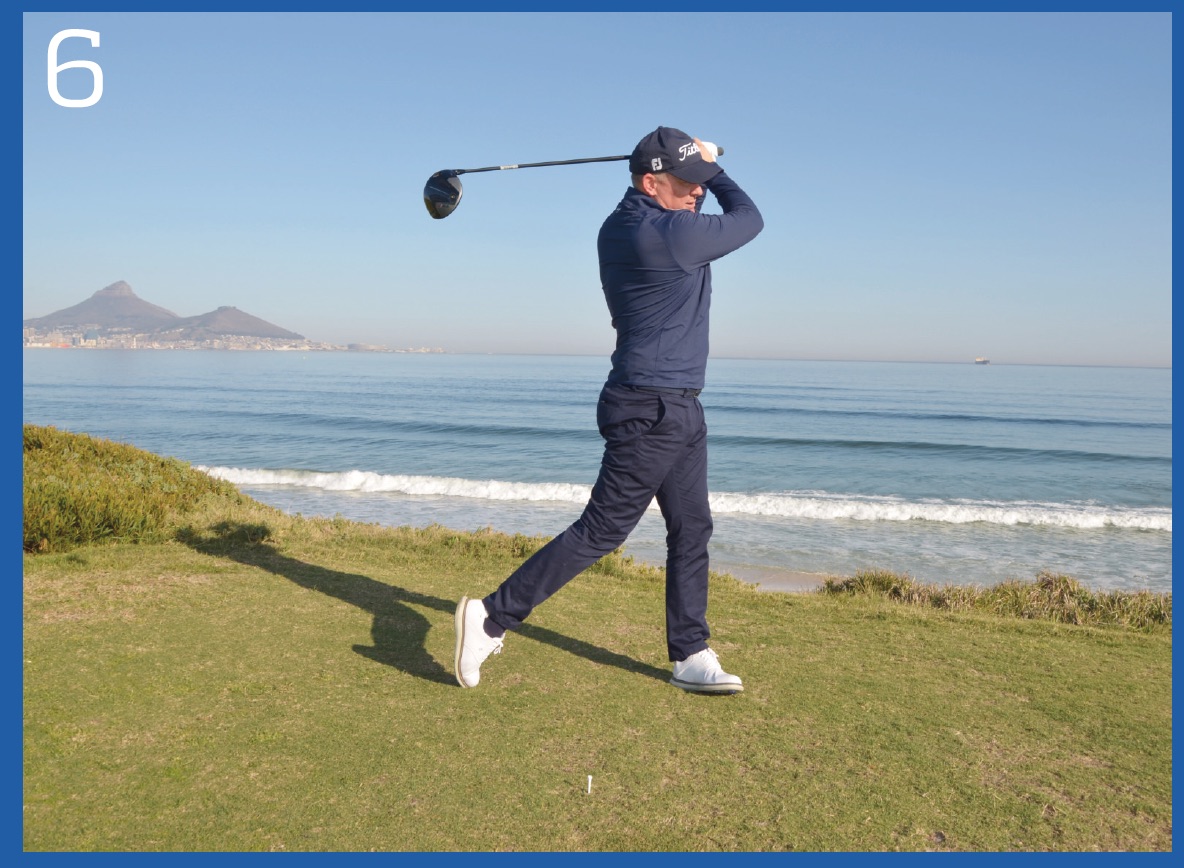In his latest instruction series, GRANT HEPBURN highlights some of the simplest, yet most effective, golfing drills ever devised.
I see so many amateur golfers struggle to transfer their weight correctly through the golf swing. Often they transfer their weight correctly on to their right side (for right-handed golfers) in the backswing, only to get stuck on their right side as they swing through the ball.
Others don’t transfer their weight to their right side at all, and end up stuck on their left side throughout the golf swing. Either of these two common scenarios result in a huge loss of power and consistency for the golfer.
Getting it right
In this good swing sequence, I start by setting up correctly at address position. My feet are planted firmly and my weight favours my right side. It is vital that I stay balanced throughout the transfer of weight on to my right side during the backswing.
In the downswing, note how I use my right foot as a source of power, as it pushes my weight back to my left side and my right shoulder swings underneath my chin. This helps me generate more clubhead speed through impact, which results in greater power.
It also helps me stay balanced through the swing, ensuring I hit the sweet spot of the club.
The drill
Fortunately, there are a number of drills that can help you learn the correct feeling for moving your weight on to your right side in the backswing and then transferring it through to your left side during your downswing. Here is my favourite.
In this drill, where I encourage you to actually hit balls, start with your normal set-up, but as you swing the club back, I want you to allow your left leg to move back, in the air, to the right leg. Note how I have lifted my left leg into the air and how my left knee moves in towards the right side in the drill sequence.
This is a key move for two reasons. Firstly, it provides a great sense of the feeling of loading your weight on to the right leg. Secondly, when you do that, it allows your hips to turn, unrestricted, in your backswing. This in turn helps your shoulders turn correctly and get into a powerful, loaded position behind the ball.
In the downswing, I actually take a step back to where my left foot was in the address position. What’s important here is that as you transfer your weight back to your left leg, you will feel the sensation of initiating the downswing by pushing off your right foot in order to force your weight back to the left. It’s a great way of feeling the correct sequencing of weight transfer, as you start it all with your lower body.
As you land firmly on your left foot, you should feel how most of your weight is on your left side at impact and you can rotate all the way through to a balanced finish of the swing, with 100% of your weight on the left side.
Once you get the weight movement and the sequencing correct, you should start to feel an increase in your clubhead speed as you produce a longer, better turn and a touch more lag in your downswing. You’ll have more power hitting into the back of the ball and, hopefully, a better strike too.
– Hepburn has been a regular face in Compleat Golfer for more than a decade. His CV includes time coaching on the European and PGA Tours, and an impressive list of top amateurs and pros. He is the CEO of Golf RSA and the South African Golf Development Board. Follow him on Twitter @granthepburn.
– This article first appeared in the July 2022 issue of Compleat Golfer magazine. Subscribe here!


